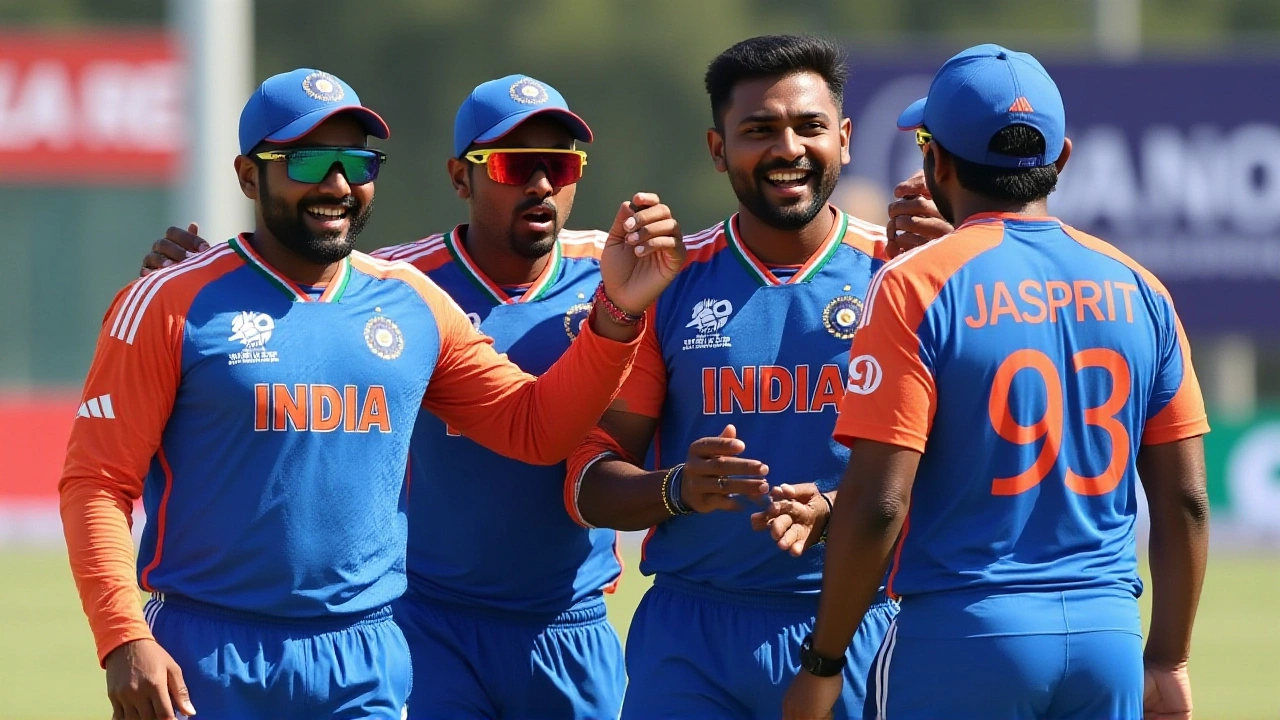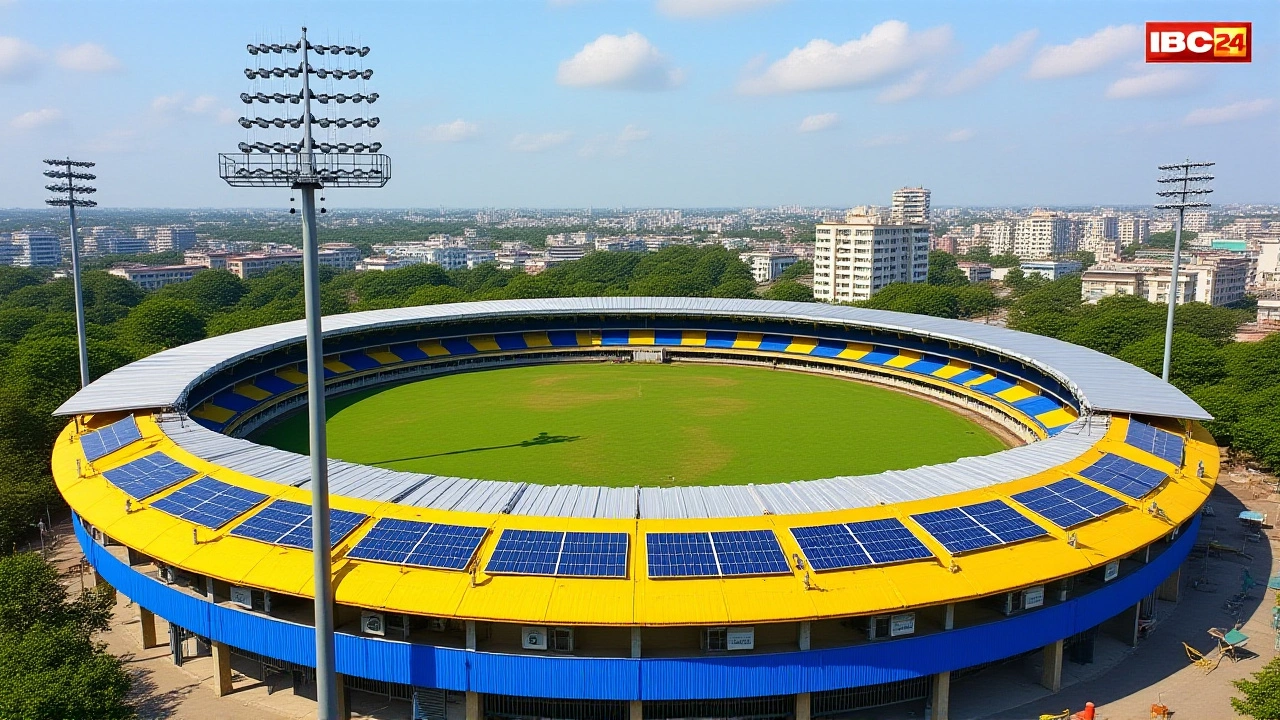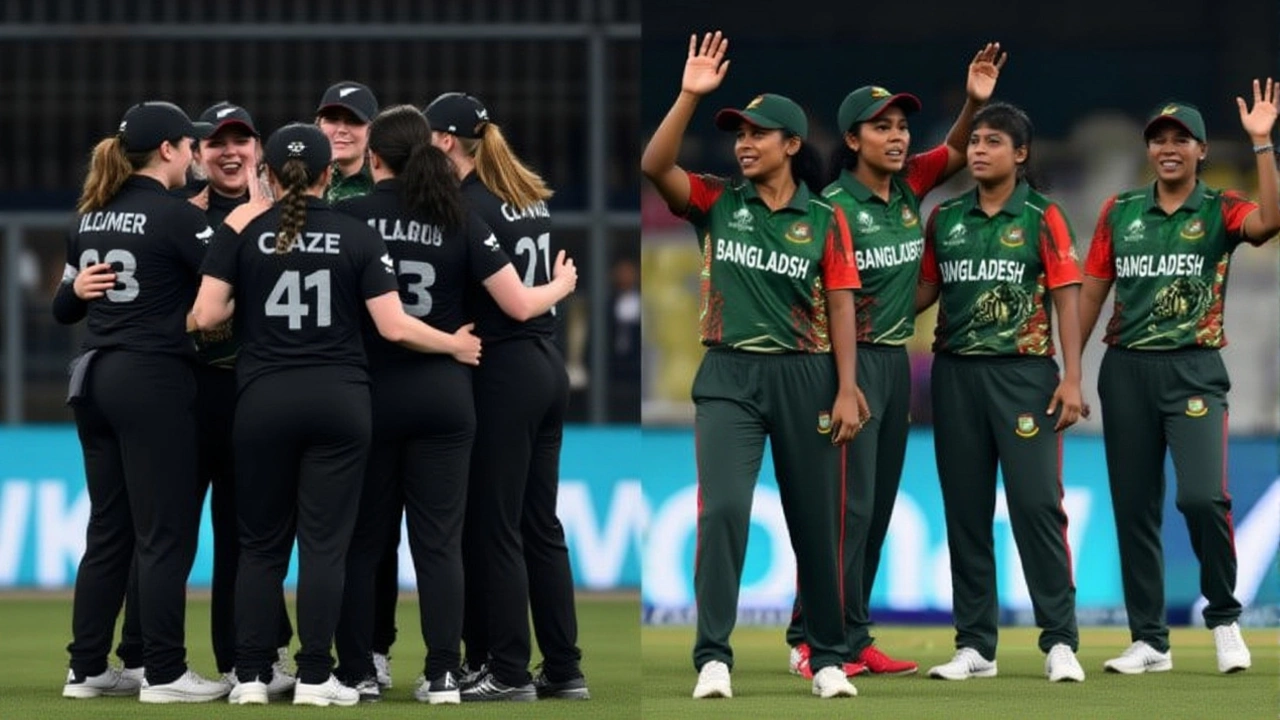New Zealand Women smashed Bangladesh by 100 runs on Friday, October 10, 2025, securing their first win of the ICC Women's Cricket World Cup 2025 and turning a two‑match losing streak into a morale‑boosting triumph.
The match kicked off at 8:45 PM UTC under the bright lights of Dubai, where the International Cricket Council (ICC) has staged the tournament’s group games. After winning the toss, New Zealand elected to bowl first, a decision that paid off in spectacular fashion.
Match Overview
Bangladesh’s top order crumbled within the first 14 overs, slipping to 33/6. Only three batters – left‑handed all‑rounder Fahima Khatun, off‑spinner Nahida Akter, and fellow spinner Rabeya Khan – managed to push past double figures.
In response, New Zealand posted a formidable total of 252/5, anchored by a brisk 68 from opening batter Beth Mackey and a quick‑fire 55 from middle‑order powerhouse Megan Harper. The innings was rounded off by Amy du Plessis, who contributed a handy 30‑run cameo.
The bowlers then turned the spotlight onto Bangladesh’s fragile batting, delivering a 100‑run victory that left spectators buzzing.
New Zealand's Bowling Masterclass
At the heart of the demolition was a lethal new‑ball partnership between right‑arm medium‑fast Jess Kerr and right‑arm medium bowler Rosemary Mair. Kerr’s disciplined line yielded 3/24, while Mair returned figures of 2/27, together ripping through the top order.
Veteran pacer Lea Tahuhu added another 2/30, and all‑rounder Amelia Kerr chipped in with a crucial wicket in the death overs. The quartet, all contracted by New Zealand Cricket, demonstrated why New Zealand’s pace attack is considered one of the best in women’s cricket.
“We executed the plan perfectly,” Jess Kerr said in a post‑match interview. “Early breakthroughs always put pressure on the opposition, and we kept the momentum.”
Bangladesh's Batting Collapse
Bangladesh’s innings resembled a series of desperate sprints rather than a measured chase. After the early loss of opener Salma Khatun, the middle order never found its footing. Even the occasional boundary felt like a mirage.
Rabeya Khan’s lone four – a flick off Jess Kerr that rolled to the fence – was the only boundary recorded after the 30‑run mark. “We knew we were in trouble early, but the bowler’s lengths were just too tight,” she admitted, wiping sweat from her brow.
Off‑spinner Nahida Akter tried to steady the ship with a gritty 12‑run knock, but the relentless pressure forced a rash hook that sent the ball sky‑high for a catch at deep mid‑wicket.

Reactions and Expert Analysis
Cricket analyst Vikram Kapoor highlighted the stark contrast in skill sets: “New Zealand’s fast bowlers exploited seam movement on a slightly damp outfield, while Bangladesh’s batters seemed unsettled by the line‑and‑length discipline.”
Meanwhile, a spokesperson for the Bangladesh Cricket Board (BCB) stressed that the loss would serve as a learning curve: “Our players will review the footage, focus on technique, and come back stronger for the next match.”
Implications for the Tournament
With the win, New Zealand jumps to third place in Group B, earning two points and reviving hopes of a quarter‑final berth. The team now faces a crucial clash against Sri Lanka next week, where the bowlers will aim to maintain their lethal rhythm.
Bangladesh, on the other hand, slides to the bottom of the table, needing a dominant performance against Pakistan to stay alive. The batting frailties exposed in this match will likely prompt the BCB to shuffle the order and perhaps give a younger top‑order player a chance.

Historical Context
New Zealand’s victory marks their first win in a World Cup campaign that began with a narrow loss to England and a rain‑affected defeat against Australia. Historically, the White Ferns have struggled in overseas conditions, making this bounce‑back especially noteworthy.
Bangladesh’s participation in the ICC Women’s Cricket World Cup spans four tournaments since their debut in 2014. While they have produced memorable upsets in the past, the current campaign underscores a widening gap between the emerging and established sides.
What’s Next for Both Teams
New Zealand will train at the high‑performance centre in Mount Maunganui under head coach Graham Shaw, focusing on refining their fielding standards and perfecting death‑over strategies.
Bangladesh returns to the BCB’s academy in Mirpur, Dhaka, where batting coach Mizanur Rahman plans to run scenario‑based drills aimed at coping with high‑pace attacks. The team’s morale will be a key factor as they prepare for a high‑stakes encounter against Pakistan on October 17.
Frequently Asked Questions
How does this win affect New Zealand’s chances of reaching the knockout stage?
The victory lifts New Zealand to three points, placing them in the top three of Group B. A win against Sri Lanka in the next round could secure a spot in the quarter‑finals, turning the campaign around after two early defeats.
Which Bangladeshi players showed any resistance during the collapse?
All‑rounder Fahima Khatun managed a gritty 14 runs, while off‑spinner Nahida Akter contributed 12. Their brief resistance nudged the total past 50 but wasn’t enough to change the outcome.
What were the key factors behind New Zealand’s dominant bowling?
A combination of early swing, disciplined line‑and‑length, and relentless pressure from the new‑ball pair of Jess Kerr and Rosemary Mair set the tone. Support from experienced pacer Lea Tahuhu and the versatile Amelia Kerr added depth, making it hard for Bangladesh to build partnerships.
When and where does Bangladesh play its next World Cup match?
Bangladesh’s next fixture is scheduled for October 17, 2025, against Pakistan at the Shiraz Stadium, Dubai. The match will be a decisive test of their ability to recover.
How does this result compare with previous World Cup encounters between the two sides?
Historically, New Zealand has held a modest edge, winning three of the five World Cup meetings. However, the 100‑run margin is the largest defeat Bangladesh has suffered in the tournament’s history, underscoring a widening performance gap.

